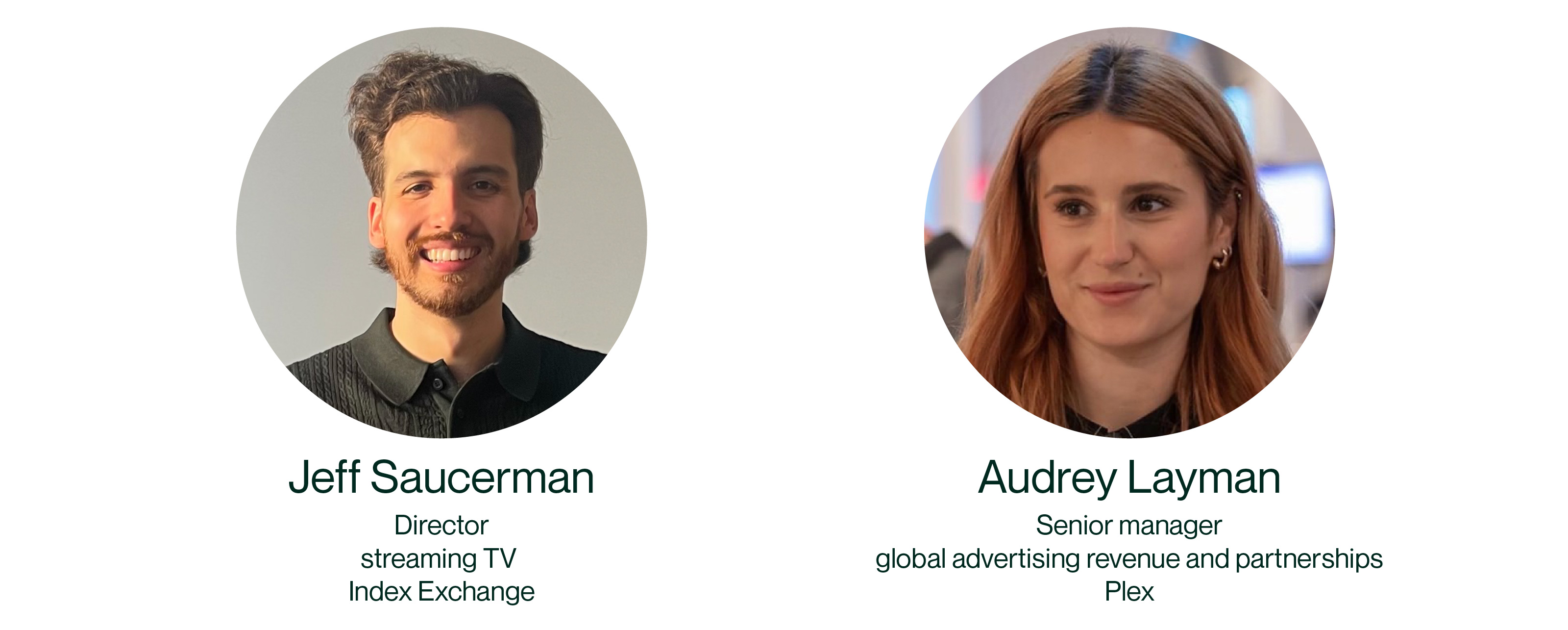With more content available than ever before, today’s streaming TV viewers are overwhelmed with choice. Not only do viewers struggle to find something to watch across a growing number of streaming apps but media buyers are also challenged to reach their desired audiences across the fragmented landscape. Content discovery is quickly becoming a more urgent initiative for streaming platforms looking to improve viewer engagement and monetization.
Plex, one of the largest free ad-supported TV platforms, is redefining how viewers find and enjoy their favorite content by blending community recommendations, customizable experiences, and machine learning optimization into its platform.
I spoke with Audrey Layman, who oversees global ad revenue and partnerships at Plex, about how Plex is approaching content discovery, why it’s key to fostering viewer engagement, and how the platform helps buyers connect to engaged audiences.

1. Given the ever-expanding amount of streaming content, how does Plex approach enhancing content discovery and recommendations for viewers? How do you ensure they’re able to find relevant and engaging programming?
Audrey Layman: Content discovery is a big focus for us, and we believe good discovery has to include a social component. Viewers are more likely to watch content recommended by people they know and trust, and Plex is the first service to bring streaming and community together in a single platform, simplifying the viewing experience with aggregated content recommendations.
Through Discover Together, we personalize the “what to watch” experience for viewers, enabling them to add their friends, share comments and ratings, create universal watchlists, and more. Viewers can explore what their friends are watching, as well as what’s trending and available across Plex or their selected services.
2. With more competition in the free ad-supported TV (FAST) and advertising-based video-on-demand (AVOD) landscape, how are you keeping viewers engaged? What makes for an ideal viewer experience?
AL: Our main goal is to foster viewer engagement by facilitating swift access to tailored content selections. Our app offers customizability that allows viewers to tailor their experience with unique layouts, favorite channels, and recommendations based on both machine learning and human input.
The ideal and most enjoyable viewer experience combines efficient content discovery with options for viewers to customize their experience according to their preferences.
We’re dedicated to constantly improving navigation, organization, and content presentation so that our audience can seamlessly discover and enjoy new content.
3. Fragmentation in streaming also makes it challenging for media buyers to find their desired audiences. How does making content more discoverable and boosting viewer engagement translate to demand? What are you doing to surface the right inventory to buyers to help them engage their audiences within relevant content?
AL: The faster we can connect viewers with the movies and shows they love, the more time they can spend engaging with that content—which ultimately leads to more demand opportunities. Not only do advertisers want to reach highly engaged audiences, but they also want more control over contextually relevant and premium placements.
We enable just that. Advertisers can manage brand suitability and reach their audiences across Plex through privacy-centric identity solutions, video-level contextual data, and content metadata like genre or rating. We also curate custom packages, which allow marketers to align their brands to the most relevant TV shows and movies surrounding key tentpole events, holidays, and major advertising moments.
Recently, we introduced native ad units and sponsorship opportunities, enabling advertisers to capture viewers’ attention at the first touchpoint with Plex—during the content discovery phase. Content owners can reach engaged viewers actively searching for what to watch, and brands can go beyond traditional in-stream video with contextually relevant, high-impact sponsorships.
4. Plex has always led with a programmatic-first sales approach. How has working with Index helped to improve your yield and monetization?
AL: To maintain a positive viewing experience, it is our responsibility to partner with SSPs who can source quality demand and deliver the most relevant ads for our viewers.
Through strong agency and DSP relationships, Index has allowed us to connect premium brands to their desired audiences across Plex, while providing us with valuable market insights and yield optimization recommendations.
We have also seen impressive revenue growth by embracing innovative and interoperable solutions, like Unified ID 2.0, and Index has been an integral partner as we evaluate and adopt these new programmatic technologies.
5. AI in advertising is growing, and we’re seeing many new applications emerge, from generating ad creatives to improving programmatic efficiency and more. Looking ahead, how do you expect the rise of AI and machine learning technologies to play into content discovery and commercialization?
AL: With advancements in machine learning, we can now provide tailored recommendations by analyzing various signals derived from viewers’ behavior, as well as the preferences of their selected networks, be it friends, family, or industry influencers.
This fusion of machine learning and human curation enables us to categorize viewers into distinct profiles, facilitating more precise content matching to their interests and enhancing their content discovery experience. Together, machine learning and community make for a powerful combination.
Want to learn more about streaming TV? Tune in to our Index Explains video series where we break down the complexities of streaming TV advertising to help you unlock its full potential.
Back to blog



